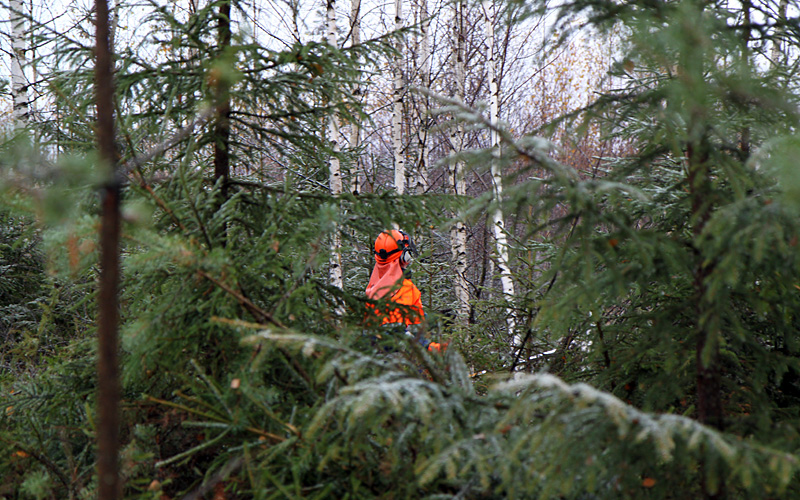The Ministry of the Environment defends local master plans

The Ministry does not believe that the plans do not recognise the difficulties they cause for forestry. However, decision-making should be fair for all.
The Finnish forest sector has been dissatisfied with how local master plans serving as general guidelines for land use within municipalities treat forestry. This is why the Finnish Forest Foundation financed a study on the effects of local master plans on forestry.
The study was led by Ms. Tuula Packalen, Professor at the Finnish Forest Research Institute, and was completed last autumn.
The study was also noted by the working group preparing an evaluation of the Finnish Land Use and Building Act, which regulates process of drafting and approving local master plans. Published in February, the evaluation admits that the restrictions set in local master plans on forestry activities have caused confusion.
In line with the study led by Professor Packalen, the evaluation notes that local master plans have clearly increased the areas under restricted forestry use. According to the evaluation, one should ”carefully consider the cases in, and the extent to, which restrictions on forestry activities included in a local master plan are necessary.”
Rapid changes in processes related to local master plans are not to be expected. Legislative changes, for example, are hardly likely.
One criticism has been that no evaluation of economic impact is carried out when local master plans are drafted, so as to show the losses incurred by forestry and industries that use timber as a raw material – such as local sawmills.

Mr. Matti Laitio, Senior Environmental Adviser at the Ministry of the Environment, presents somewhat differing views. ”Significant economic impact must always be identified. The evaluation of impact has generally been criticised as being too cumbersome. In some cases this has even caused unwillingness to start the planning project,” says Laitio.
In a seminar organised to present Professor Packalen’s study last autumn, a planning official from a municipality in Southern Finland actually stated that ”no land use plans would ever be approved if the economic impact on forestry were really evaluated.” Laitio does not think this would be the case.
”Planning must be reasonable”
Laitio stresses that the impact of a local master plan must be reasonable. But what happens if the planning authority fails to see in advance that an impact would be significant? Forest owners often think that the planning authority does not always consider forestry to be a livelihood at all and, if it does, it still does not always understand the necessity of carrying out specific forestry activities.
Laitio does not accept this, but emphasizes that forest owners should voice their concerns during the planning process. ”I do believe that the concerns are also familiar to the planning authority. However, the evaluation does say that the process must be reasonable for all and the plan must be based on solid grounds,” says Laitio.
Forest owners often think, however, that participation in the planning process is made too difficult. In some cases they have even been banned from taking part because of being interested parties and thus to be disqualified.
Laitio finds this to be an odd interpretation. ”You can always participate in land use planning, if not as an interested party, then on the basis of residents’ general rights. The only restrictions concern people disqualified due to being involved in municipal decision-making,” says Laitio.
Ms. Ulla Hurmeranta, Managing Lawyer at the Association of Finnish Local and Regional Authorities, emphasizes that broad participation is something that the municipalities want to promote.

Forest owners are also dissatisfied with how losses to forestry are compensated for. Even sizeable compensations are often denied on the grounds that the area to which forestry restrictions are applied is formally defined as being in forestry use in the plan.
Hurmeranta has not heard of compensations being denied due to this technicality. There also exist few court decisions on this issue.
Why, then, does the law not define a precise limit for a loss that cannot be exceeded without compensation – just as the Forestry Act does concerning environmental restrictions? According to Laitio, a provision of this kind would be difficult to include in the Land Use and Building Act.
”Permissions must be chargeable”
According to the Land Use and Building Act, it is also possible for the planning authority to demand that the forest owner acquires a special permission to log in forests with landscape or recreational values, for example. This permission may be so expensive that it may consume all of the revenue from the logging.
The cost of applying for the permission must be paid even if it is ultimately not granted. This is why many decide not to apply at all – and thus not to carry out the forestry work they had planned.
Laitio says that the permissions are not that expensive. ”In forest areas in Espoo on the southern coast of Finland, the charge is 180 euros plus 35 euros per hectare. I find it difficult to believe that the logging revenue would be less than this,” Laitio says. However, in the case of thinnings, for example, the revenue can be very low; yet thinning is essential for the future productivity of the forest.
Hurmeranta finds it hard to believe that the permissions are too expensive. However, as she says, the municipality has the right to set a charge that will cover all expenses created by the granting process and the subsequent monitoring of compliance. ”Even when no permission is granted, expenses are incurred, but you need no monitoring, which means that a negative decision should be that much cheaper,” says Hurmeranta
The charges also vary a great deal from one municipality to the next. According to Hurmeranta, the reason is that some municipalities cover the expense partly from tax revenue. ”The direction is, however, that such subsidies will be discontinued in the future. The aim is that the charge for the permission should cover all expenses. Thus, the charge will go up in the future,” says Hurmeranta.
On the other hand, Laitio asks how a completely negative decision could be possible. ”This would mean placing the area under strict protection, wouldn’t it?” he asks.
”Plans should be interpreted uniformly”
So as to treat all forest owners equally, it would be essential that the entries in plans are interpreted in the same way everywhere. At the moment this can vary a great deal. Laitio does not deny this completely, because land use planning is, after all, human activity.
”Of course we strive to unify the interpretations. We have given instructions on interpretation to the planning officials, but they may need some updating, since the latest set is from the beginning of the 2000s,” says Laitio.
Packalen suggested that the instructions should be on line, so that those affected by the planning, such as forest owners, would have access to the same information as the planning officials. According to Laitio, they are already available on the Ministry of the Environment’s website.
Previously in forest.fi: Land use planning significantly restricts forestry
Effects of forest-use constraints on wood purchasing potential -study
Steering of land use planning in Finland
Finnish Land Use and Building Act
Kirjoita kommentti